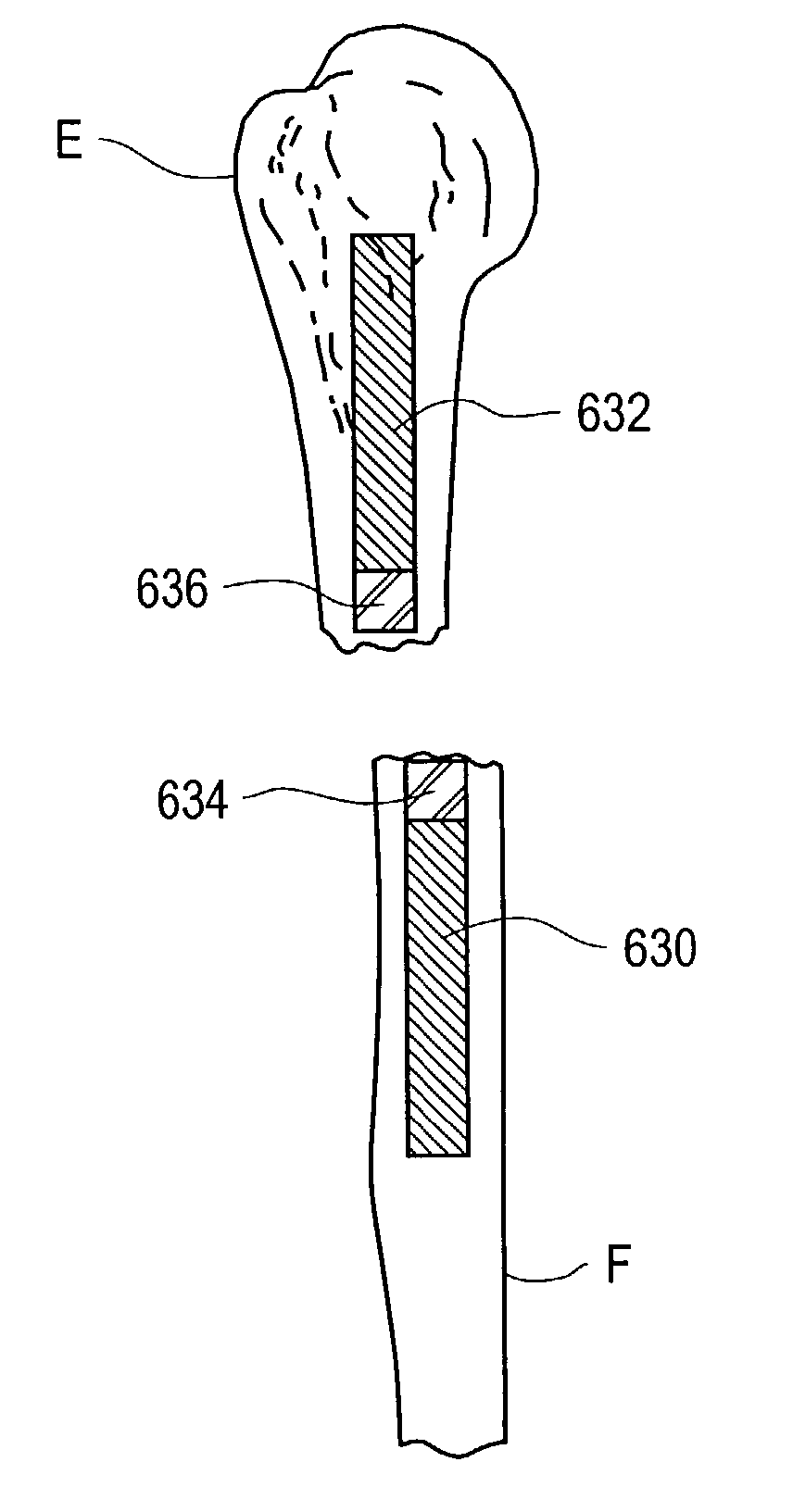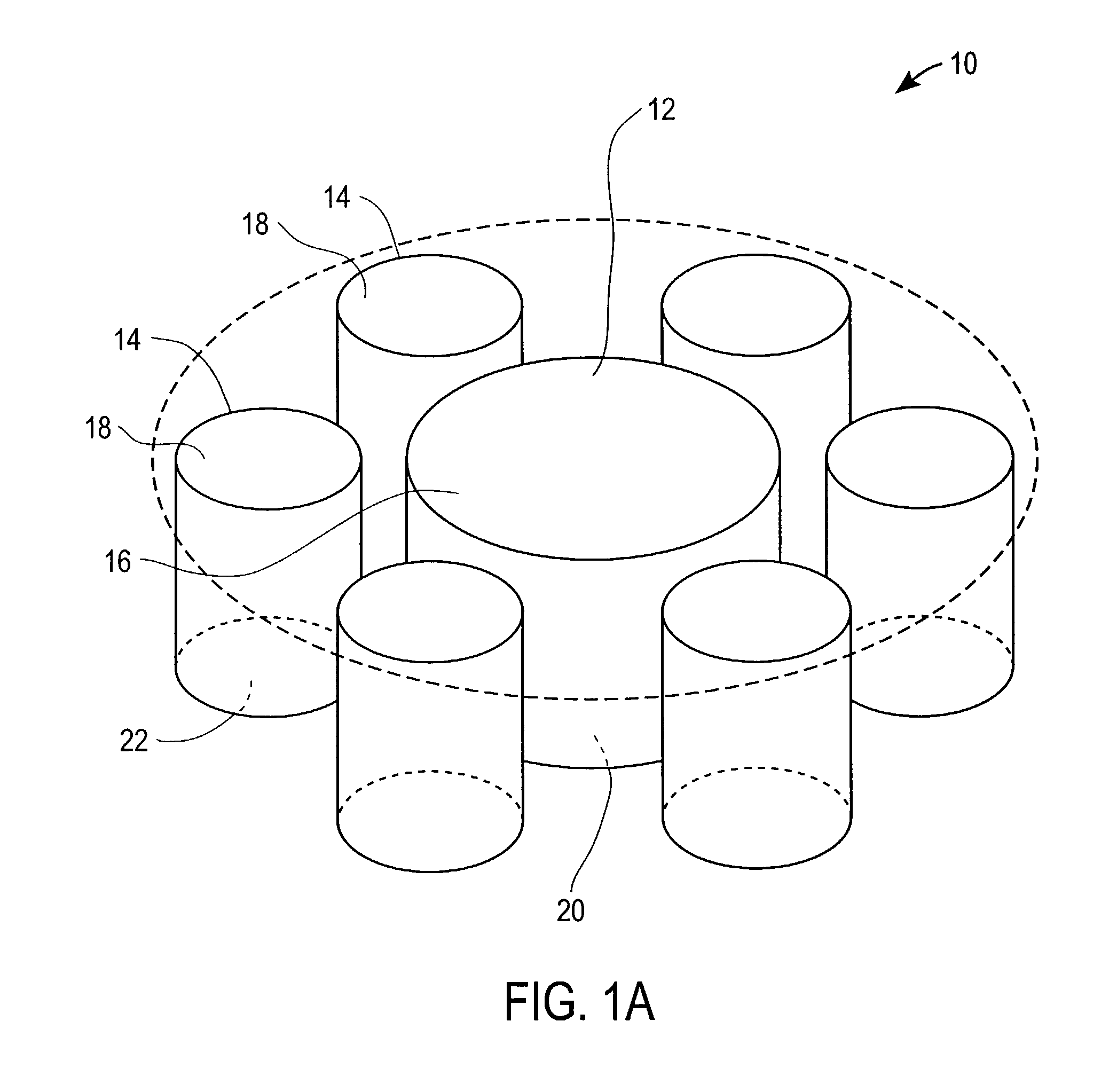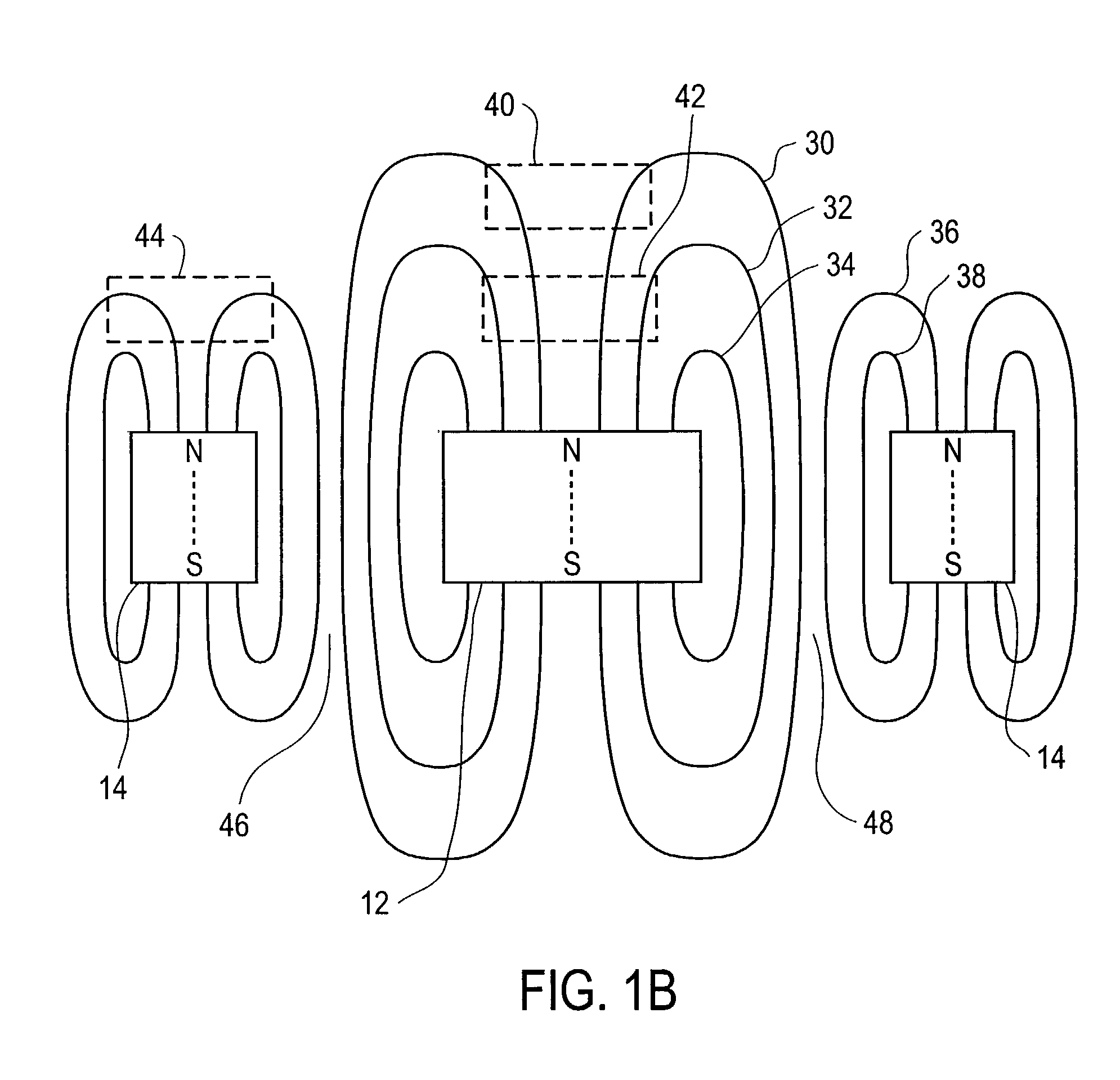Magnetic array implant
a technology of magnetic array and implant, which is applied in the field of magnetic array implants, can solve the problems of inability to understand, limited use of disclosed devices and methods for specific orthopedic problems, and general inpracticality of designs, so as to avoid potentially unpredictable implantation, facilitate implantation, and facilitate treatment
- Summary
- Abstract
- Description
- Claims
- Application Information
AI Technical Summary
Benefits of technology
Problems solved by technology
Method used
Image
Examples
example
[0080]The following example represents the results of a computer model of a basic array design incorporating the fundamentals of the present invention. A computer simulation was performed to determine the magnitude of the repulsive vertical and radial force components of a representative magnetic arrays. As illustrated in FIG. 4A, apparatus 1100 includes first magnetic array 1110 and a second magnetic array 1120, where both arrays include the cylindrical center magnets 1112, 1122 positioned inside annular magnets 1114, 1124. The center magnets for each array were chosen to be one inch in diameter. The annular magnets were chosen to have an O.D. of two inches and an I.D. of one inch. Each array was one inch thick. In second array 1120, central magnet 1122 was made of NdFeB 48 and outer annular magnet 1124 was made of NdFeB 33. First array 1110 had the same configuration except that the magnet materials were reversed such that the stronger NdFeB 48 was at the outside. Both the first a...
PUM
 Login to View More
Login to View More Abstract
Description
Claims
Application Information
 Login to View More
Login to View More - R&D
- Intellectual Property
- Life Sciences
- Materials
- Tech Scout
- Unparalleled Data Quality
- Higher Quality Content
- 60% Fewer Hallucinations
Browse by: Latest US Patents, China's latest patents, Technical Efficacy Thesaurus, Application Domain, Technology Topic, Popular Technical Reports.
© 2025 PatSnap. All rights reserved.Legal|Privacy policy|Modern Slavery Act Transparency Statement|Sitemap|About US| Contact US: help@patsnap.com



